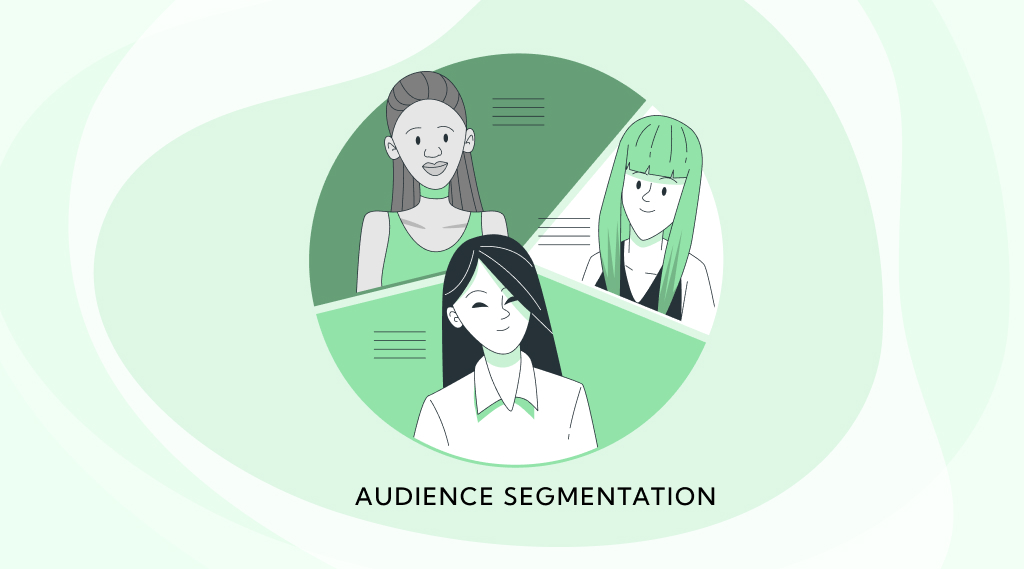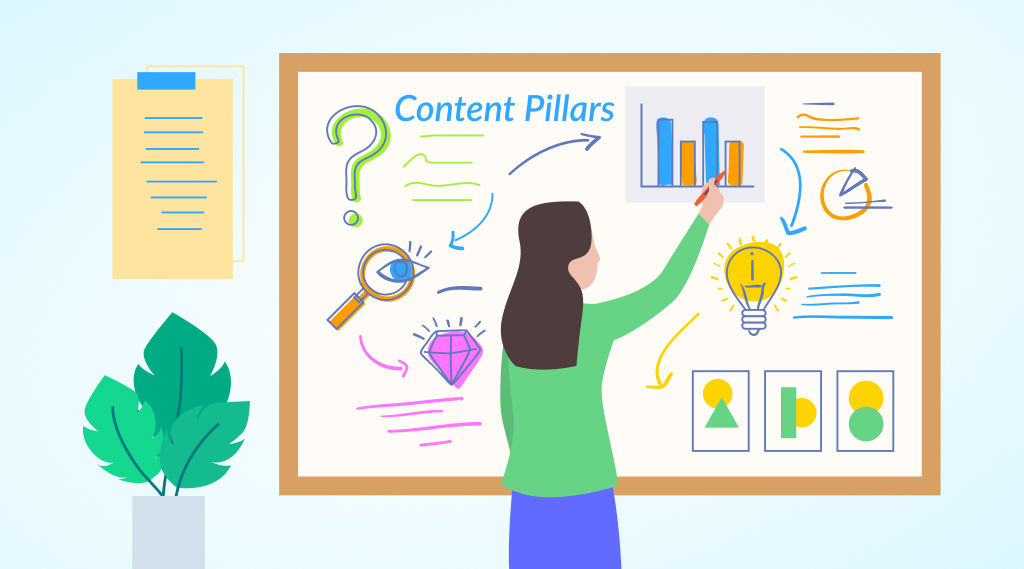Introduction
Audience segmentation is sorting people into groups based on similarities.
Think of it like organizing a party. You group friends who like music together and others who prefer games. Each group gets what they enjoy.
For businesses, it’s similar. They divide customers into groups based on things like age, interests, or location. This helps them understand what different people want. For instance, young adults might like trendy clothes, while older folks prefer practical items.
Segmentation helps in marketing. Instead of sending one message to everyone, businesses send tailored messages to each group. This increases the chances of people responding positively. For example, if a company sells sports gear, they might send ads for basketball shoes to the group interested in sports. It’s like speaking directly to them, making them more likely to buy.
Why is audience segmentation important in B2b SaaS?
Audience segmentation is crucial in B2B SaaS for several reasons:
- Customization: Tailoring your product or service to specific audience needs.
- Effective communication: Allows for targeted messaging that resonates with different customer groups.
- Better understanding: Helps in comprehending diverse customer behaviors and preferences.
- Increased Engagement: Enhances engagement by addressing specific pain points of different segments.
- Improved conversion rates: Targeting the right audience increases the likelihood of converting leads into customers.
- Enhanced customer satisfaction: Meeting the unique needs of each segment leads to higher satisfaction levels.
- Maximized ROI: Efficient allocation of resources by focusing on segments with the highest potential.
- Competitive advantage: Helps differentiate your offering from competitors by catering to distinct market segments.
Audience segmentation types
Audience segmentation means dividing people into groups based on shared characteristics. These groups help marketers better understand their audience and tailor their messages to each group’s needs and preferences. Here are some types of audience segmentation:
1. Demographic segmentation: This type of segmentation divides people based on demographic factors like age, gender, income, education, occupation, and marital status. For example, a company might target young adults aged 18-24 with a different marketing approach than they would use for middle-aged professionals.
2. Geographic segmentation: Geographic segmentation categorizes people based on where they live. It could be as broad as targeting people in a specific country or as narrow as targeting people in a particular neighborhood or zip code. For instance, a beachwear company might focus its marketing efforts on coastal regions where the climate is warm.
3. Psychographic segmentation: Psychographic segmentation looks at people’s lifestyles, values, interests, attitudes, and personality traits. This segmentation helps marketers understand what motivates their audience and how they make purchasing decisions. For example, a luxury car brand might target consumers who value status and prestige.
4. Behavioral segmentation: Behavioral segmentation divides people based on their behaviors, such as purchasing habits, brand loyalty, usage rate, and decision-making processes. This type of segmentation helps marketers identify patterns in consumer behavior and tailor their marketing strategies accordingly. For instance, an airline might offer frequent flyer programs to reward loyal customers.
5. Technographic segmentation: Technographic segmentation classifies people based on their technology usage, preferences, and adoption rates. It helps marketers understand how their audience interacts with technology and which channels they prefer for communication. For example, a software company might target businesses that use specific operating systems or cloud services.
6. Occasion-based segmentation: Occasion-based segmentation divides people based on specific occasions or events, such as holidays, birthdays, or seasonal trends. It helps marketers create targeted promotions and offers that resonate with consumers during these times. For instance, a retailer might offer discounts on party supplies before major holidays like Halloween or Christmas.
7. Benefit segmentation: Benefit segmentation groups people based on the benefits they seek from a product or service. It helps marketers understand what drives consumer decisions and how they perceive value. For example, a skincare brand might target consumers who prioritize anti-aging benefits over moisturizing properties.
8. Cultural segmentation: Cultural segmentation considers people’s cultural backgrounds, traditions, beliefs, and customs. It helps marketers tailor their messages to resonate with different cultural groups and avoid cultural insensitivities. For instance, a food brand might adjust its packaging and flavors to appeal to diverse cultural preferences.
How to do audience segmentation analysis?
Audience segmentation analysis helps you understand your audience better. Here’s how to do it:
1. Define your goals
Clearly outline specific objectives for your audience segmentation analysis, ensuring alignment with broader business goals. Whether it’s enhancing brand loyalty, increasing sales, or improving customer satisfaction, having well-defined goals guides the entire segmentation process and ensures its relevance and effectiveness.
2. Gather data
Employ various methods to collect comprehensive data about your audience, including surveys, interviews, website analytics, and social media insights. Diversifying data sources helps capture a more holistic view of your audience’s characteristics and behaviors, enabling more nuanced segmentation.
3. Organize data
Use advanced data analysis techniques, such as clustering algorithms or regression analysis, to categorize and group your audience data effectively. By identifying meaningful patterns and relationships among variables, you can create more accurate and insightful audience segments that drive actionable insights.
4. Identify segments
Delve deeper into your data to uncover hidden segments or subgroups within your audience, beyond conventional demographics or psychographics. Exploring niche interests, purchase motivations, or behavioral triggers can reveal valuable insights for targeted marketing efforts and product development.
5. Create personas
Develop rich, detailed personas that vividly depict the unique attributes, preferences, and pain points of each audience segment. Going beyond basic demographic profiles, personas humanize your audience segments, promoting empathy and understanding among marketing teams and enabling more tailored strategies.
6. Prioritize segments
Evaluate the potential impact and profitability of each audience segment, considering factors such as size, growth potential, and alignment with your brand’s value proposition. Prioritizing segments helps allocate resources effectively and focus efforts on segments with the greatest strategic significance.
7. Tailor marketing messages
Craft compelling, resonant messaging tailored to the specific needs, preferences, and communication preferences of each audience segment. Adopting a personalized approach enhances engagement and conversion rates, promoting stronger connections and driving meaningful interactions with your brand.
8. Test and refine
Embrace a culture of experimentation and continuous improvement, systematically testing different segmentation strategies, messaging variations, and channel combinations to optimize performance. Analyzing results and soliciting feedback enables iterative refinement and ensures ongoing relevance and effectiveness.
9. Track performance
Establish key performance indicators (KPIs) aligned with your segmentation objectives, regularly monitoring metrics such as customer acquisition, retention rates, and revenue growth. Tracking performance enables data-driven decision-making, facilitating course corrections and strategic adjustments as needed.
10. Adapt and evolve
Remain agile and responsive to evolving market competitive dynamics and consumer trends by regularly reassessing and updating your segmentation approach. Continuously gathering fresh insights and incorporating feedback ensures your segmentation strategy remains agile, adaptive, and impactful over time.
7 Audience segmentation best practices for B2b SaaS
Here are seven best practices to consider:
1. Understand your audience: Before anything else, you must understand who your audience is. What are their needs, pain points, and goals? By understanding them, you can tailor your messages to resonate with them.
2. Segmentation criteria: Choose criteria for segmenting your audience. This could include industry, company size, job title, or geographic location. The more specific your criteria, the better you can target your marketing efforts.
3. Use data wisely: Gather data about your audience through surveys, website analytics, and customer feedback. Analyze this data to identify patterns and preferences among different segments. This will help you make informed decisions about how to reach each group.
4. Create personas: Develop personas that represent different segments of your audience. Give each persona a name, background, and set of characteristics. This will humanize your audience and make it easier to tailor your messaging to their needs.
5. Customize messaging: Craft messages that speak directly to each segment of your audience. Highlight how your SaaS solution addresses their specific challenges and helps them achieve their goals. Personalized messaging is more likely to resonate and drive action.
6. Test and iterate: Continuously test different messaging and tactics with each audience segment. Pay attention to what resonates and what doesn’t, and use this feedback to refine your approach over time. Audience preferences may change, so it’s important to stay agile and adaptable.
7. Monitor results: Keep a close eye on the performance of your marketing campaigns across different audience segments. Measure metrics like engagement, conversion rates, and customer satisfaction. Use this data to evaluate the effectiveness of your segmentation strategy and make adjustments as needed.
Let’s wind up
Audience segmentation is like sorting people into groups based on what they have in common. For B2B SaaS businesses, this means understanding different types of customers and tailoring messages to meet their specific needs. By using data wisely, creating detailed personas, and customizing messaging, businesses can increase engagement and conversion rates. Regularly reviewing and updating audience segments ensures relevance over time.
Ultimately, effective segmentation leads to better communication, higher satisfaction, and increased business success. So, take the time to understand your audience and personalize your approach—it pays off in the long run.
FAQs
Q: What is audience segmentation in B2B SaaS?
Audience segmentation divides your target market into smaller groups based on specific characteristics like industry, company size, or pain points, allowing for more personalized marketing and sales strategies.
Q: Why is audience segmentation important in B2B SaaS?
It enables tailored messaging, efficient resource allocation, and better understanding of customer needs, leading to higher conversion rates, customer retention, and overall business growth.
Q: How do you segment audiences effectively?
Use a combination of demographic, firmographic, technographic, and behavioral data to create detailed buyer personas, ensuring accurate targeting and messaging alignment.
Q: What are some common segmentation criteria for B2B SaaS?
Criteria include industry vertical, company size, geographic location, job title, purchase behavior, pain points, technological stack, and stage in the buyer’s journey.
Q: How can I collect data for audience segmentation?
Use CRM systems, marketing automation platforms, website analytics, customer surveys, social media insights, and third-party data sources to gather relevant information about your target audience.
Q: What are the benefits of personalized messaging through segmentation?
Personalized messaging resonates better with prospects, builds trust, and increases engagement and conversion rates by addressing specific pain points and offering tailored solutions.
Q: How often should I review and update audience segments?
Regularly review and update segments based on changes in market trends, customer behavior, and product offerings to ensure relevance and effectiveness of marketing and sales efforts.
Q: How can I ensure effective communication across segmented audiences?
Develop targeted content, messaging, and campaigns tailored to the unique needs and preferences of each segment, using appropriate channels and communication styles.
Q: What are some tools and technologies for audience segmentation?
Use customer relationship management (CRM) software, marketing automation platforms, data analytics tools, and customer data platforms (CDPs) to analyze and segment your audience effectively.
Q: How can I measure the success of audience segmentation strategies?
Track key performance indicators (KPIs) such as conversion rates, customer retention, customer lifetime value, engagement metrics, and ROI to assess the impact of segmentation on business outcomes.



